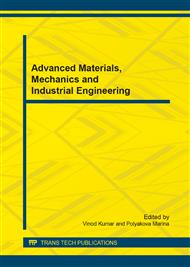p.129
p.135
p.141
p.146
p.151
p.156
p.160
p.164
p.169
Exit Geometry Effect on Jet Mixing
Abstract:
An elliptical nozzle of 3:1 aspect ratio (AR) issuing a Mach 1.5 jet has been used to investigate its mixing promoting efficiency under over-expanded and under-expanded conditions at the nozzle exit. Azimuthal asymmetry of the elliptical shape is interpreted as a benefit to the mixing process, which is significantly enhanced in comparison to an equivalent circular jet under identical conditions. The elliptical jet decays faster than its circular counterpart throughout the jet field. It is found that continuous variation in the size of the mixing promoting vortices shed from the nozzle exit, as a result of its azimuthal asymmetry, is responsible for faster decay of elliptical jet. The visualization of elliptic jet corroborates the fact that the waves prevailing in the elliptical jet are significantly weaker than those in the circular jet.
Info:
Periodical:
Pages:
151-155
Citation:
Online since:
July 2014
Authors:
Price:
Сopyright:
© 2014 Trans Tech Publications Ltd. All Rights Reserved
Share:
Citation:


